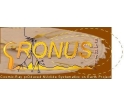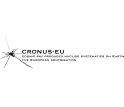News Release 05-119
Geologists Use Particles from Galaxy's Far Reaches to Understand Processes at Earth's Surface

Supernovae give off blasts of cosmic rays that bombard the Earth and change its surface rocks.
July 14, 2005
This material is available primarily for archival purposes. Telephone numbers or other contact information may be out of date; please see current contact information at media contacts.
Scientists at the U.S. National Science Foundation and the European Commission of the European Union have announced a new initiative--called CRONUS, for cosmic-ray produced nuclide systematics--to measure cosmic rays from far-distant supernovas to time the history of the Earth's surface.
Galactic explosions known as supernovas unleash torrents of fantastically energetic atomic particles. Billions of these cosmic rays impact Earth every year. The infinitesimal particles blast apart the atoms of Earth's atmosphere and rocks, changing them into new elements. Now, NSF has awarded $5.8 million over five years for geologists to measure the accumulated results of these atomic transmutations in rocks at Earth's surface.
Fred Phillips of the New Mexico Institute of Mining and Technology will coordinate the U.S. arm of the project, which includes 13 U.S. universities.
"The CRONUS initiative will benefit all disciplines in the Earth sciences," said Herman Zimmerman, director of NSF's division of earth sciences. Whether geomorphology, tectonics, volcanology, hydrology, geologic hazards, or paleoclimatology, he said, "Each needs an improved understanding of geochronology at the Earth's surface."
The European Union, through its Marie Curie Actions, has awarded 3.4 million Euro ($4.4 million) over four years for the project, a research-training network involving research teams in France, Germany, Netherlands, Slovakia, Switzerland the United Kingdom. Training of early stage and experienced researchers in the novel technique is an integral part of the European CRONUS effort to contribute to the mobility, exchange and training of high-quality European scientists.
Tibor Dunai, now at the Vrije Universiteit, Amsterdam, will coordinate the European arm. He will relocate to the University of Edinburgh in the fall of 2005.
"The ability to date changes in landscapes with cosmogenic nuclides has already revolutionized our understanding of Earth processes," said Dunai. "CRONUS will allow us to unlock the great potential this novel technique has, helping us to better understand the environment around us."
Powerful cosmic-ray particles penetrate only a few feet below the Earth's surface, so deeper rocks are shielded from the buildup of cosmic-ray transmutations. The number of new atoms produced by cosmic rays can thus show the amount of time passed since geological events such as earthquakes, landslides and glaciers. They can also reveal how fast Earth's surface changes from such forces as erosion by rivers.
"As scientists who use geochronology techniques in the course of their research," U.S. coordinator Phillips said. "We need to know exactly how cosmic rays are distributed on our planet's surface, taking into account variables like longitude, latitude, and elevation, as well as changes occurring over geologic time scales, such as periodic shifts in Earth's magnetic field."
Scientists affiliated with CRONUS will work to understand the fundamentals of cosmic-ray reactions so that they can routinely use them as methods for reconstructing and analyzing environment changes. When perfected, the new cosmic-ray methods will shed light on Earth's past climate cycles, changes in soil erosion, frequency of floods and landslides, and how weathering of rocks affects global warming and cooling.
Scientists from the United States and Europe will work together sampling rocks from key sites around the world, exposing elements to nuclear beams in high-energy accelerators, and counting cosmic-ray impacts with detectors aboard high-altitude aircraft. These results will all be synthesized in a broad-ranging effort to understand all aspects of the cosmic phenomenon.
"This is a way of bringing the projectiles of exploding stars down to very practical use on earth," said Phillips.
-NSF-
-
Scientists in the CRONUS project are using cosmic rays to study geology on Earth.
Credit and Larger Version -
European scientists are also particpating in the CRONUS project.
Credit and Larger Version
Media Contacts
Cheryl Dybas, NSF, (703) 292-7734, email: cdybas@nsf.gov
Related Websites
CRONUS-US: www.physics.purdue.edu/cronus/
CRONUS-EU: www.cronus-eu.net
The U.S. National Science Foundation propels the nation forward by advancing fundamental research in all fields of science and engineering. NSF supports research and people by providing facilities, instruments and funding to support their ingenuity and sustain the U.S. as a global leader in research and innovation. With a fiscal year 2023 budget of $9.5 billion, NSF funds reach all 50 states through grants to nearly 2,000 colleges, universities and institutions. Each year, NSF receives more than 40,000 competitive proposals and makes about 11,000 new awards. Those awards include support for cooperative research with industry, Arctic and Antarctic research and operations, and U.S. participation in international scientific efforts.
Connect with us online
NSF website: nsf.gov
NSF News: nsf.gov/news
For News Media: nsf.gov/news/newsroom
Statistics: nsf.gov/statistics/
Awards database: nsf.gov/awardsearch/
Follow us on social
Twitter: twitter.com/NSF
Facebook: facebook.com/US.NSF
Instagram: instagram.com/nsfgov




